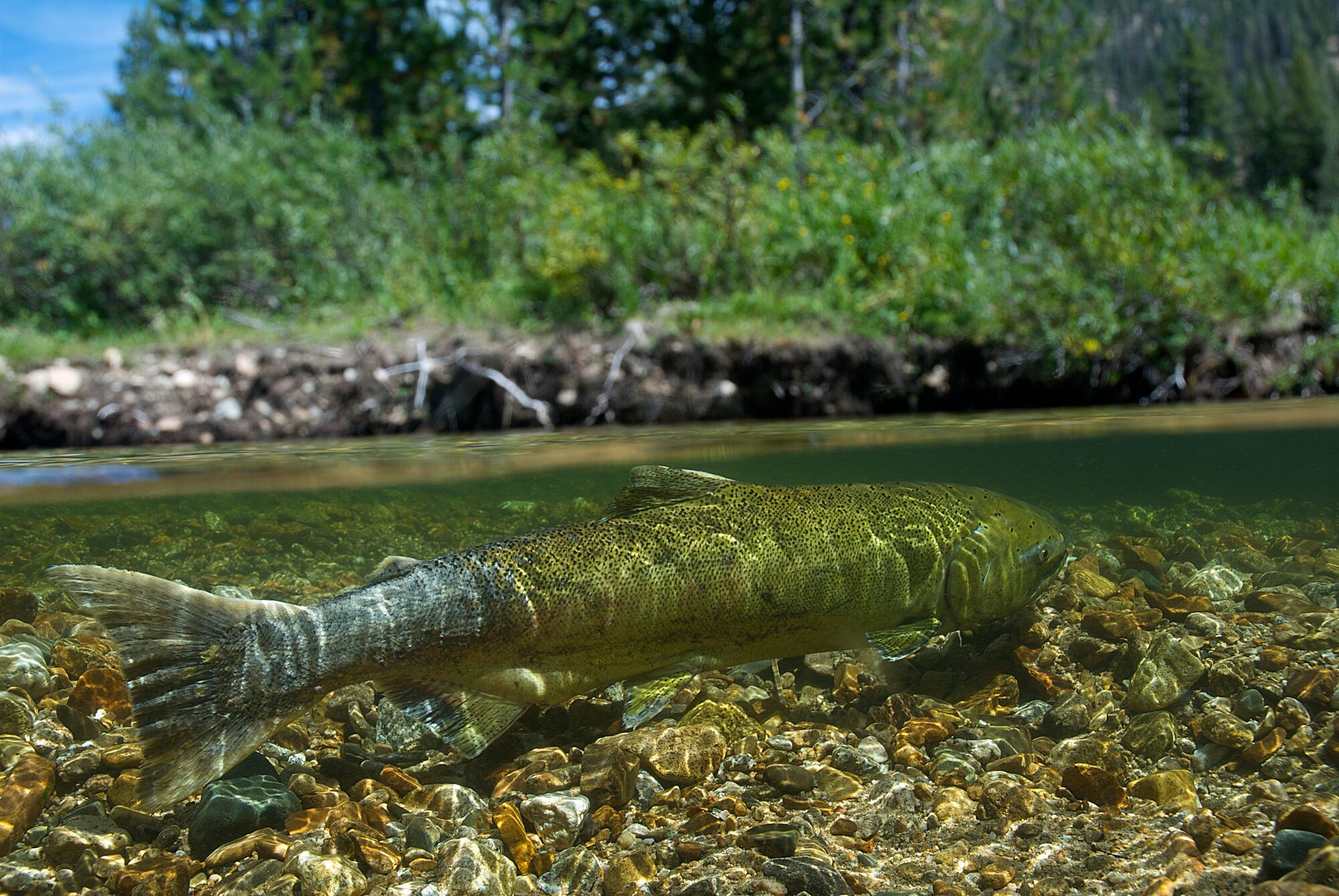Swinomish Tribal Community Seeks Legal Intervention to Mitigate Salmon-Harming Tidegates
Swinomish seeks to defend NOAA Fisheries Biological Opinion that protects ESA-listed Chinook Salmon, endangered Southern Resident Killer Whales
Contact
Today the Swinomish Indian Tribal Community filed a motion to intervene as a defendant to support National Oceanic and Atmospheric Administration (NOAA) Fisheries’ Biological Opinion (“BiOp”) that found Skagit Dike District 12’s No Name Slough tidegate complex replacement would result in “jeopardy” to Endangered Species Act (ESA)-listed Chinook salmon and endangered Southern Resident killer whales unless estuary habitat mitigation measures were completed. Tidegates block salmon access to habitat when tides are incoming and high. The No Name Slough tidegate complex was constructed approximately 100 years ago and precludes over 200 acres of estuary habitat by restricting the natural biological and physical processes that maintain it. No mitigation for these habitat impacts has ever occurred, and now Dike District 12 challenges the BiOp and refuses to perform necessary estuary habitat mitigation measures prior to extending the life of the fish-harming tidegate by decades.
“The Swinomish people’s way of life and livelihoods, as well as protected Treaty rights, have been greatly impacted by the loss of roughly 85% of Skagit River estuary habitat. Our Chinook salmon cannot recover unless adverse impacts from tidegates are mitigated and estuary habitat is restored,” said Swinomish Chairman Steve Edwards. “Scientific research is clear that tidegates preclude natural estuary functions and block Chinook salmon access to habitat. We are the People of the Salmon, and these fish are integral to the Tribe’s sustenance, culture, identity, and economy, yet for years we have not had enough salmon to feed our families, and the Orcas are starving. It is unacceptable that a diking district would refuse to mitigate undeniable harms to salmon,” Chairman Edwards said.
The state and federally approved Skagit Chinook Recovery Plan lists estuary habitat as a primary limiting factor to Chinook salmon recovery. Tens of thousands of acres of historic Skagit estuary habitat were converted to agricultural land in the past century through an extensive drainage system that relies on dozens of tidegates. The Skagit River System Cooperative’s scientific research with NOAA Fisheries and the WA Department of Fish & Wildlife shows a clear distinction between tidegate effects on Chinook salmon access to Skagit estuary habitat that is behind a tidegate and estuary habitat that is not behind a tidegate. Under normal operations, documented observations have shown a 4:1 to 800:1 difference in the number of juvenile Chinook salmon outside the tidegate versus the number of juvenile Chinook salmon behind the tidegate. While some variation has been observed, these research results have proven that tidegates impede passage and access to estuary habitat for juvenile ESA-listed Chinook salmon. The National Marine Fisheries Service BiOp provided a reasonable and prudent alternative to avoid jeopardy that consists of generating a minimum of 275 restoration credits and restoring a minimum of 8.6 acres of estuary habitat within the Skagit Bay/Padilla Bay area, as well as reasonable and prudent measures to minimize incidental take.
Chairman Edwards continued, “It’s a matter of fairness — our salmon and Treaty Rights have suffered for decades as a direct result of converting tens of thousands of acres of estuary habitat into agricultural lands. We seek basic accountability from the agricultural dike districts — they must do their part to ensure ESA-listed Chinook salmon can recover, and that means completing mitigation for adverse impacts to estuary habitat that effect ESA-listed Chinook,” Chairman Edwards stated.
Over the last four decades, scientific research in the Skagit has shown growth rates for juvenile Chinook salmon in estuaries are high, and that once completed restoration projects open up new estuarine habitat it is immediately utilized by Chinook smolts. Importantly, science has shown that the amount of estuary habitat available is directly linked to Chinook salmon productivity, meaning more estuary habitat is necessary for Chinook to achieve Recovery Plan targets. More recent science makes clear that in addition to juvenile Chinook salmon, estuaries are regularly used by juvenile chum salmon and juvenile coho salmon.
Chinook salmon populations in the Lower Skagit River have declined steadily and dramatically, reaching such an extreme low point they were listed as threatened under the Endangered Species Act in 1999. The Tribe has suffered a precipitous decline in its salmon harvest in recent decades, from monthly harvest opportunities to only a few weeks per year. The Swinomish people have cared for the Skagit River and fished its waters since time immemorial and have a reserved treaty right to fish within the entire Skagit River basin and beyond. Yet, salmon populations are now so low that Tribal citizens have had to buy and freeze fish for important cultural ceremonies.
Background
The Skagit River is home to all six species of Pacific salmon found in Washington State, including steelhead, and is the most important salmon-producing river in Puget Sound. It is the second largest producer of salmon in Washington after the Columbia River and one of the largest on the West Coast. Skagit River salmon are critically important to the Swinomish Indian Tribal Community and to all the parts of the ecosystem that depend on salmon, including critically endangered Southern Resident killer whales. Swinomish is a federally recognized tribe with over 1,100 members. Swinomish is a signatory to the 1855 Treaty of Point Elliott. Its 10,000-acre Reservation is located 65 miles north of Seattle, Washington, on Fidalgo Island.

Additional Resources
About Earthjustice
Earthjustice is the premier nonprofit environmental law organization. We wield the power of law and the strength of partnership to protect people's health, to preserve magnificent places and wildlife, to advance clean energy, and to combat climate change. We are here because the earth needs a good lawyer.